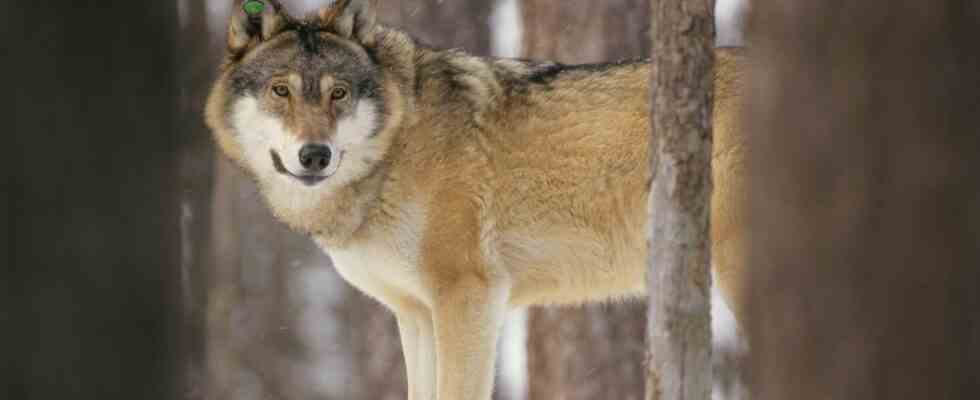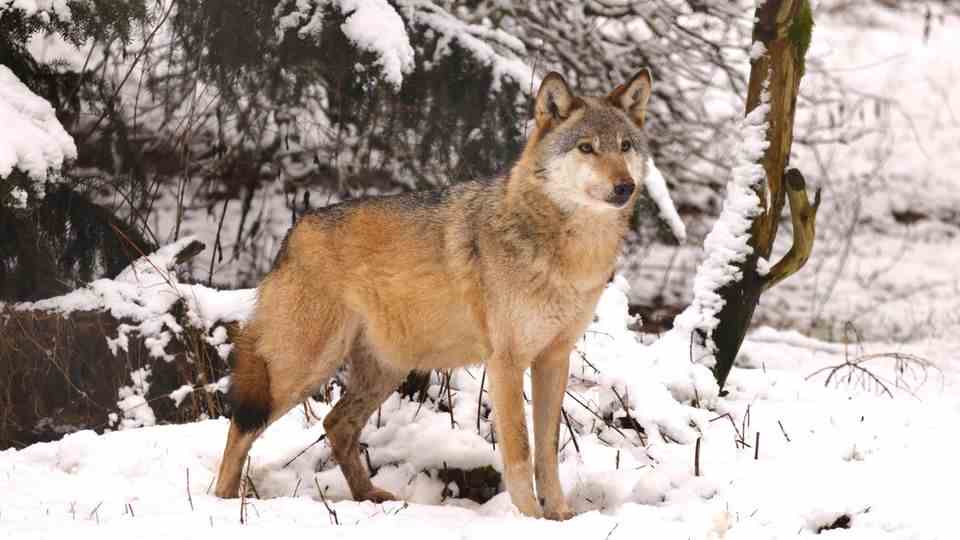Wolves are currently being hunted in Sweden. It’s one of the biggest hunts in years. Conservationists warn of serious consequences. The EU isn’t too enthusiastic either, but doesn’t seem to want to do much to protect animals.
They have been released for shooting since January 2nd: 75 wolves in Sweden who may be hunted and killed. Gävleborg, Dalarna, Västmanland, Örebro and Värmland are the provinces with the highest wolf density. Among other things, the wolf is to be shot there.
In 2010, Sweden allowed licensed hunting of wolves in the Scandinavian country again. This year’s hunt is the biggest yet, reports the Swedish TV channel SVT. Politicians want the hunt, hunters cheer them: the wolf population is too high in Sweden, there are conflicts between humans and animals. Animal rights activists, on the other hand, warn of serious consequences for ecosystems if too many wolves are shot.
At least 51 of the released animals have been shot in the current hunt, as the Swedish Hunters Association announced on Monday.
An estimated 460 wolves in Sweden – more than in Germany
The procedure is celebrated there: “The wolf hunters deserve praise. (…) I am proud to be a hunter when I see how the wolf hunters acted in central Sweden. The reports I received bear witness to well-organized hunts a high level of security and reputable hunters – despite the presence of activists trying to disrupt the hunt in some places,” said Mikael Samuelsson, chairman of the Association of Swedish Hunters. The association argues that the number of wolves in Sweden is too high.
The population is not threatened, says Samuelsson, but is at a record level. According to the Swedish Nature Conservation Agency around 540 animals were counted in Scandinavia in the winter of 2021/22. In Sweden, the number of wolves during this period has been estimated at around 460.

A dead wolf is measured after the wolf hunt in Sweden in 2010
© Olivier Morin / AFP
However, Sweden is in the EU comparison back: It is estimated that there are more than 2700 wolves in Bulgaria and around 3300 in Italy. In Germany lived noisy Federal Environment Ministry in the monitoring year 2021/2022 a total of 161 confirmed packs, 43 pairs and 21 territorial individuals.
From the Baltic Sea to Saxon Switzerland
In the land of eagles, wolves and cranes – Germany’s wild east
Politicians want fewer wolves, animal rights activists are sounding the alarm
Like the hunters’ association, Swedish politicians see the need to reduce the number of wolves. The environmental and Agriculture Committee of the Swedish Parliament proposed changes to wolf management last May. One should orientate oneself to the reference value decided by Parliament in 2013. Specifically: “The committee believes that given the densification of the wolf population in the country, the value should be in the lower range of 170 individuals.”
The then Swedish Minister for Rural Affairs, Anna-Caren Sätherberg, said about it: “We have achieved favorable conservation status, making wolf management unpredictable.” The level of conflict with the wolf has increased, while acceptance of it has decreased.
However, conservationists consider the figure of 170 to be too low. The Swedish Environmental Protection Agency had set a minimum number of 300 wolves to keep the population in favorable conservation status, reported SVT in May. A number that in EU Laws is anchored.

The wolf is important for ecosystems
Criticism also came from nature and animal rights activists: The number of 170 is not based on scientific facts, said Benny Gäfwert, predator expert at the WWF, the broadcaster. “The value of 170 is too low.” The smaller the wolf population, the greater the impact of fluctuations on the genetic status of the population.
Wolves do indeed play a major role in ecosystems, as they are at the top of the food chain in their habitats. Wolves are considered the “health cops” of the forest, as they eat weak and sick animals, keeping their prey population “healthy”.
However, the presence of wolves also causes certain animals, such as deer, to avoid wolf hunting grounds. This in turn helps the vegetation as young plants are eaten less. Wolves thus contribute to the restoration of vegetation. In forests this is very important to protect the soil from erosion.
EU criticized Sweden for wolf hunting
Animal rights activists are now hoping for support from the European Union so that the wolf is no longer endangered. There have already been two reminders from Brussels in the direction of Stockholm, for example in 2015. At the time, the EU Commission called on the government to bring wolf hunting into line with EU rules. According to the Commission, by allowing licensed hunting, Sweden has introduced a “systematic practice that violates the Habitats Directive”. In addition, Sweden “does not consider any other satisfactory alternatives” to wolf hunting.
So far, however, no action has been taken against Sweden before the EU Court of Justice. A commission official told the news site about the current hunt “politico”: “The infringement procedure is ongoing and we are closely monitoring the situation.”
EU resolution wants less protection for wolves
However, the signs in the EU are not pointing to the protection of wolves: After the pony “Dolly” from EU Commission President Ursula von der Leyen last year torn by a wolf she instructed Commission officials to reassess the rules protecting wolves in Europe, how “politico” also reported.
At the end of November, she called for a “detailed analysis” of the wolf threat after reports of increased attacks on livestock, especially in the Alps, had come in.
In the same month, the European Parliament passed a resolution to protect livestock – to the detriment of wolves: the text calls for their protection status to be downgraded.
Sources: Svenska Jägereförbundet, SVT, NaturvärdsverketParliament of Sweden, Nabu, Zurich ZooEU Commission, “Frankfurter Allgemeine”, “Politico”, EU Parliament, Council of Europe, Federal Ministry for the Environment


